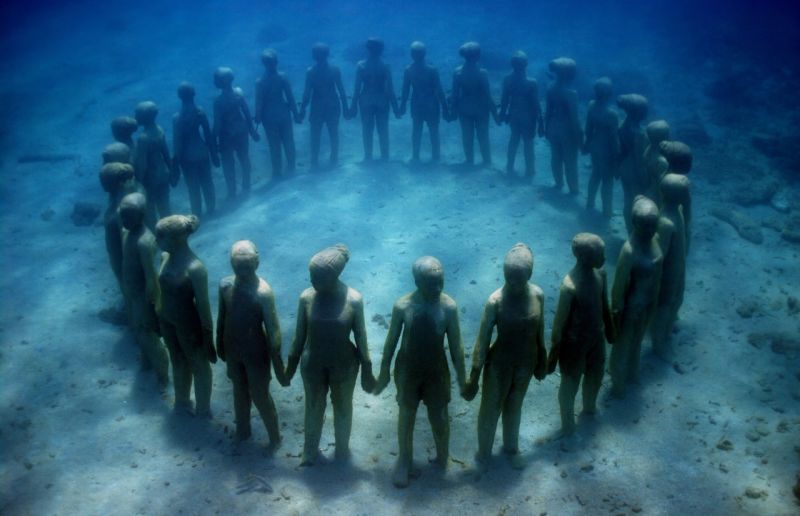Exploring the Underwater Museum in Cancun
Ring of children, Grenada
In the shallow waters off the coast of Cancun in Mexico lies an underwater field of figures. Colorful sponges cover their stony faces and layers of vibrant coral grow around their shape.
This is Museo Subacuático de Arte, the world’s first underwater museum created by British sculptor Jason deCaires Taylor with the idea to make art and the marine environment interact. He covers his exhibits in cement that attracts coral growth, then submerges them to the ocean floor, letting tropical coral overtake their surface and eventually form a new reef.

Taylor plants corals on his figures, but says he never disturbs natural settings, instead using those grown in nurseries or damaged by tourists: “I’m always trying to communicate how incredible this underwater world is, but also how it’s under deep threat at the moment with climate change.” he says.

The artist makes the sculptures as heavy as possible so they would stay on the seabed once secured, and then transports them underwater in a process that can last up to six months. Works are made of PH neutral cement, and over time sponges and coral encrust the surfaces in myriad of colorful and unexpected patterns.

‘Sometimes I go back and I’m completely amazed at this formation that occurred on the face, it’s like walking into something completely different,’ says Taylor. ‘Occasionally I’ll be completely disappointed, there will be an algae that covered the face and made it go black,’ he adds.

Apart from encouraging the growth of the area’s marine life, Taylor is also keen to highlight the identity of the region which hosts his works: ‘I don’t want it to be just myself bringing my ideas to a place, I want it to represent local culture,’ he says.

The artist doesn’t shy away from a strong metaphor, such as the installation shown above where figures have their heads literally buried in sand: ‘This was a piece referencing climate change and global warming, and how we tend to be living in denial at the moment, forgetting the future for short term gain,’ says Taylor.

The feeling of weightlessness underwater allows visitors to roam the museum with ease, examining the sculptures from every view point — floating above them or swimming away to observe them in the vast landscape.

‘Because you’re placed in an alternative world, your imagination is almost a little bit more open, it’s a bit like being in a dream where you’re a bit more suggestible to new ideas,’ he adds.

The sculptor is not concerned with the prospect of the coral eventually covering his creations to the point where the original shape is no longer recognizable.

His next project has taken him to the slightly cooler waters of the Atlantic Ocean off the coast of Canary Islands, where he is currently creating a new underwater botanical garden.





